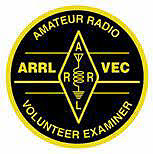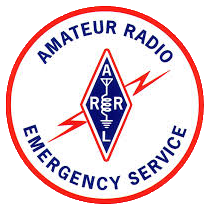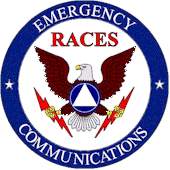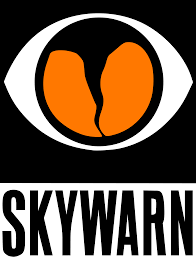Introduction to Winlink
- Details
- Hits: 17585
Introduction To Winlink
Winlink is an global radio based email system (and more); used by amateur radio operators, government entities, NGOs, and mariners. Each of these groups utilizes radio bands appropriate to their licenses, but despite that, they can communicate with each other and any other email user, across these different environments and conventional internet.
WInlink consists of a network of UHF/VHF and HF stations that can send, receive, and relay email messages via radio and internet. HF and VHF stations are scattered all over the world, acting as gateways to Winlink email servers, allowing radio-based Winlink stations to send and receive email over this world-wide radio network.
Any ham radio operator can setup a Winlink client which will allow them to use a
Programs such as Winlink Express, Airmail, and pat (for Linux) can all be used to send email via radio or directly over the internet using the internet "telnet" protocol.
Summits & Parks On The Air and EMCOMM
- Details
- Hits: 13521
I usually do a "Field Day & EMCOMM" presentation right around Field Day, highlighting how Field Day is good practice for deploying Amateur Radio in an emergency. But the recent West Georgia Amateur Radio Society presentation by WD8LQT about Summits on The Air brought to mind how much both Summits on The Air (SOTA) and Parks on The Air (POTA) also provide valuable EMCOMM experience for both those taking to the field and chasers at home in their shacks,
Both SOTA and POTA, like Field day test our ability to setup, troubleshoot, and operate radio equipment in a remote location in a short period of time. The short setup and operating windows, remote location, and the additional challenge in many cases of having to pack up gear for for use at the remote location is great practice for prepping for being deployed.
Both SOTA and POTA allow you participate as a field operator or at home. In the case of the person in the field, the location may be a relatively easy one accessible by car, or as challenging as a multi-day backpacking excursion. In the latter case, learning to pack up for an extended field trip would be very educational if you were to ever be field deployed to a disaster area. Remember, one of the tenets of EMCOMM deployment is to be as self-sufficient as practical, so as not to put further demands on resources in a disaster area.
Power Source Considerations
- Details
- Hits: 18801
A recent round-table discussion on portable operation with limited power and its application in EMCOMM resulted in a question about solar power as a sole power source for Summit or Parks on the air operation. The question prompted a whole line of reasoning about not just alternative power, but the many factors involved in selecting and utilizing a variety of power sources.
Volts & Amps & Watts (Oh, my!)
The first thing to determine is the voltage and current demands you have to operate as planned, or the voltage and current limitations you face and must operate your equipment within. In an ideal situation you control the former, in some situations, such as EMCOMM, you may need to operate at the limits of the latter.
Since most amateur radio systems can operate off 12 volts (or something around 12 volts, usually ranging from 12-15V), you will normally be working with voltage in that range. If not, then you'll have to ensure voltage is somewhere within the range your equipment will handle. Handhelds, for instance, will often operate at lower power with as little as 7.2 volts input.
Automated Packet Reporting System (APRS)
- Details
- Hits: 22635
APRS is packet-based digital tracking and communication system. It's best known for allowing operators to report their position or weather station data by internet or radio and be tracked using APRS clients and websites like aprs.fi, but APRS is useful for more than that. APRS also allows simple short messages between operators, sort of a radio-based text-messaging system. As a matter of fact, there is a text-message gateway available, allowing an operator to use their APRS setup to send text messages to cell phones and receive responses!
Since APRS allows for position reporting it has applications in search and rescue, damage assessment situations, and public service events like running and bike races. By embedding amateur radio operators into the field teams their progress can be monitored via APRS utilizing both online and offline mapping systems.
Although this makes APRS a potentially robust tool for public service, it's also useful for other activities, such as our summer balloon launches, where the balloon carries an APRS transmitter we then track to recover the balloon payload, which usually includes cameras and other electronics.
Tabletop Exercises
- Details
- Hits: 15358
Tabletop exercises are a useful tool for developing the skills to operate in a real-world situation, with the opportunity to identify many challenges and pitfalls before ever going through the effort of staging an actual exercise or deploy to an actual disaster.
Why tabletop versus a Simulated Emergency Test type exercise? Well, they are easier to plan and execute, all you need is a meeting place, and even the table is optional! Trying to coordinate an actual drill may require coordination with served agencies and place demand on physical resources like repeaters, radio equipment, or even served agency locations; all of this takes time and often places demands on other organizations.
Tabletop exercises can often be executed in an hour or two, where actual drills typically run much longer, placing more demands on the time of volunteers.
Tabletop exercises provide an opportunity to develop a plan or just work the bugs out of existing plans by playing "What if" games and talking through option when dealing with mission critical information such as knowing primary and backup repeaters, what to do when repeaters are down, frequencies and timetables for simplex communication, etc.
Why Digital Communications?
- Details
- Hits: 15489
Among other topics, we've been covering various digital modes over the past few months, particularly APRS & Winlink.
While digital voice modes like D-Star, Fusion, and others offer some other EMCOMM related enhancements to our conventional analog modes, the real improvement in our ability to communicate comes from our ability to automate various functions and communicate complex data more efficiently, digital modes that allow us to harness the power of computers.
Historically, operators tended to deploy more as "shadows" of key personnel like ambulance drivers, police, fire, or shelter employees in decades gone by, the growing ability of local, state, and federal agencies to interoperate is quickly eliminating the need for such services.
As a result, our mission required change, and it will continue to change. Communities with active Community Emergency Response Teams (CERT) often embed amateur radio operators as members, serving as a CERT member, enhancing their team with additional communication capabilities. Amateur Radio operators have been included in Search and Rescue (SAR) and Damage Assessment teams during disasters as well.
Linked Repeater Networks
- Details
- Hits: 12383
Many National Weather Service offices in the U.S. include Amateur Radio as a part of their operations plan, and most of those utilize a linked repeater network of some sort. We’re going to cover the general concept of a linked repeater network as well as how they work, and why local weather nets are often held on non-network repeaters.
A linked repeater network is a coordinated group of repeaters that rebroadcast radio transmissions picked up by other repeaters on the network, allowing ham radio operators hundreds of miles apart to communicate using a simple handheld, mobile, or fixed base radio. As a result, the NWS can keep up with weather conditions over a broad area, and operators can be forewarned of incoming weather conditions that may require local monitoring.
So, how do linked repeaters actually link? Linked repeaters have a 2nd radio interfaced with the repeater’s main radio, often called a “remote base”. This allows a signal coming in from the Remote Base to be transmitted by the repeater’s main radio and a signal coming in on the repeater’s main radio to be rebroadcast on the Remote Base.
Best Power Practices III
- Details
- Hits: 14008
In Best Power Practices I and II we discussed a variety of issues related to properly powering your gear. We covered the need for dedicated power wiring as well as the desirability of using standard connectors. Tonight we'll cover recommended wiring and protection (fuses).
Power Wire Gauge
We previously discussed the need to utilize wire of the proper gauge for feeding power to our radios, and also the fact that conventional vehicles do not have wiring from the factory capable of carrying the current required for a typical mobile amateur radio. Utilizing that wiring will likely result in damage to the wiring over time.
So, you've decided to properly power your rig with dedicated wiring for your gear. But what kind? Certainly you want to use stranded wire in a mobile rig, as solid wire eventually suffers from the vibration of the vehicle and will become damaged over time. Stranded wire is also more flexible and tolerate of being routed through the vehicle. The insulation type is important, particularly in automotive applications, where temperatures (even in the cabin) can be quite high. Cross-Linked polyethylene (XLP), and Polyvinyl Chloride (PVC) will do the job, but plain polyethylene will break down at temperatures in the cabin, much less in the engine compartment.
Best Power Practices I
- Details
- Hits: 14159
Operating a mobile rig in a motor vehicle or as a base can create some interesting challenges, and while many installations may work, they may be optimal, and could potentially damage your radio or automobile. We’ll break things down into a few different topics.
Connecting Vehicle Power
Most motor vehicles are not really wired for an accessory that draws the current a typical mobile amateur radio will. Still, many of us have (or do) run our radio using the “Accessory” or “Cigarette Lighter” jack. That jack is typically rated for 10 amps, and for intermittent usage. A conventional amateur radio with 50 Watts AM or FM output power will approach that limit and could, especially with older radios, max out the power draw, and at worst exceed capacity. Additionally, the adapter connection does not provide a solid ground or hot connection, often increasing current draw. There is little other wiring in the car that can handle that load either.
So, if you’re at or above capacity, why doesn’t the fuse blow? Because fuses require an excess of current for some sustained period of time. Even though the fuse isn’t blowing, the wiring is getting hot, and the insulation will eventually begin to break down.
Running power specifically for your radio is the best practice.
Cross-Band Repeating
- Details
- Hits: 16369
Cross-Band repeating has great potential for use in EMCOMM, extending our ability to utilize handhelds as well as providing gateways to more distant repeaters.
Before we get too deep into cross-band repeating, lets review how a typical repeater works. A repeater, generally, receives a signal on one frequency and re-transmits what it receives on another nearby frequency. The difference between the receive and transmit frequency is what we call an "offset". On a 2-meter repeater that offset is usually less (negative) or more (positive) by 600 kilohertz. Repeaters also often have a "sub-audible" tone (often referred to as PL tone, a proprietary name used by Motorola). A sub-audible tone is a very low frequency tone that we can't hear, but the repeater can detect; If the sub-audible tone is not present then the repeater will usually just ignore the incoming signal, allowing the repeater to ignore a distant station that might be transmitting an unusual distance due to atmospheric conditions or filter out random noise on the frequency.
A radio operating cross-band will function much like a regular repeater; but unlike typical repeaters, which have the input and output frequencies on the same band, the input and output frequencies will be on entirely different bands, usually 2M and 70cm. The reason for this is the significant difference in frequencies allows the simultaneous transmit and receive with simple circuits built into the radio, rather than needing large and bulky duplexers required for same-band repeating.
Many in our group who can't directly reach the repeater with an HT utilize cross-band repeat capability. To cross-band to a 2 Meter repeater using a 440mhz HT, merely run an HT in simplex on an appropriate 440Mhz frequency and then on your mobile or base station set one VFO to the same simplex frequency as your HT and operate the other VFO as normally for the repeater. Once the VFOs are set you'll need to put the radio in cross-band mode - how to do this varies by radio, so check your user's guide or search the internet. When the radio is in cross-band mode it will transmit everything that comes in on the repeater output to the 440Mhz frequency, and repeat everything from the 440Mhz frequency to the repeater. Your HT now has the same range as your base or mobile rig!
Page 2 of 7




